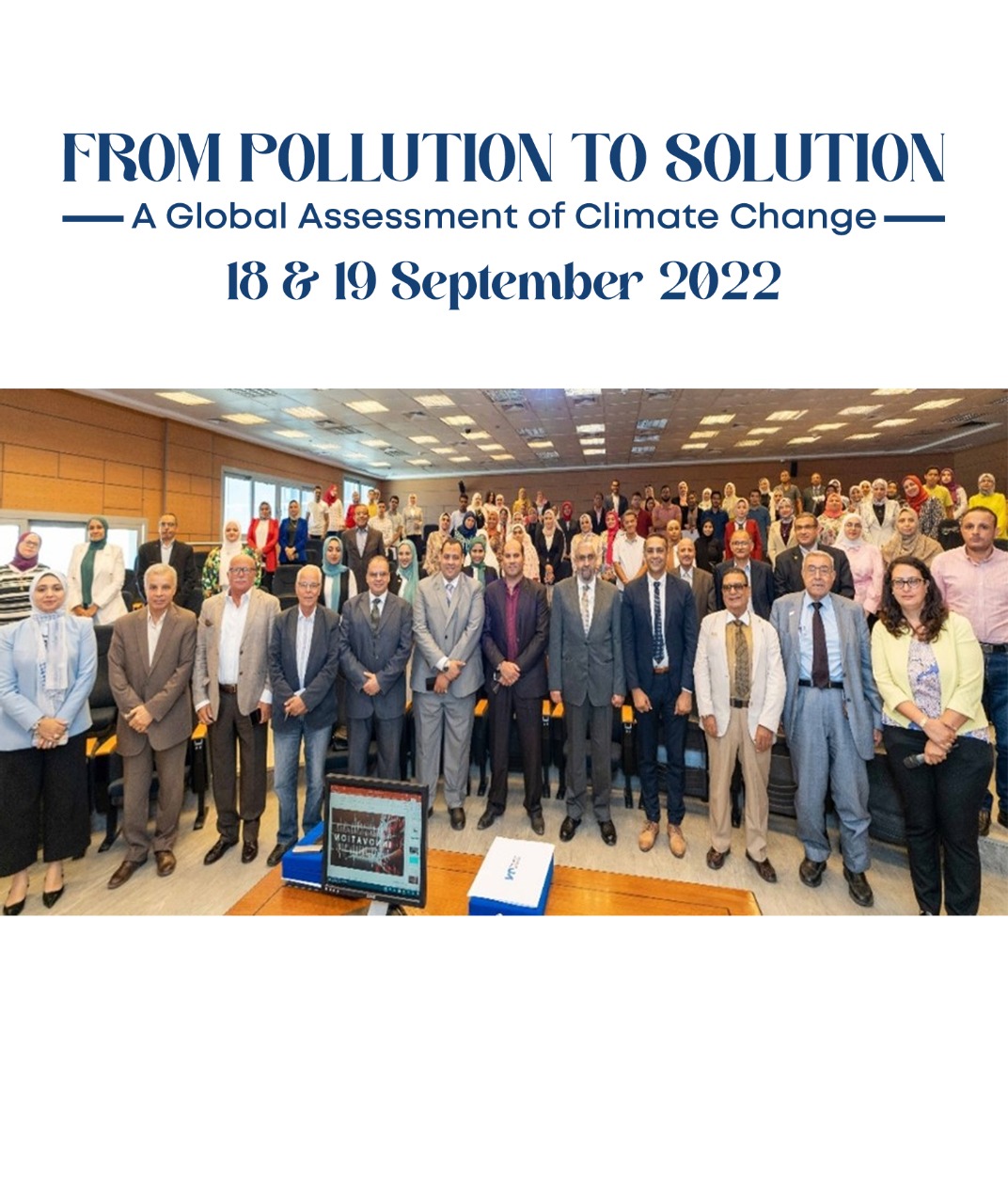
From Pollution to Solution: a Global Assessment of Climate Change Conference
The conference was held at Nile University and Beni Suef University on the 18th and 19th September 2022. The conference tackled the massive climate action demands active and sustained financial investments by critical stakeholders such as the Egyptian Meteorological Authority, Ministry of Petroleum and mineral resources governments, Climate Change Research Department, Environmental Affairs Agency, National Institute of Standards institutions, General Organization for Export and Import Control, Nile University, Beni Suef University, Ain Shams University, and Nanotech Solutions Canada Co. The conference was funded by the British Council Higher Education fund. The conference discussed agile approaches to profiling greenhouse gas emissions that cause climate change and showed how to trap methane emissions from land clearing and landfill garbage systems. The panel session focused on cutting emissions and adapting to climate impacts while recommending financing adjustments to critical stakeholders.
The conference also highlighted the outcomes of the UNEP report, entitled From Pollution to Solution: A global assessment of marine litter and plastic pollution reveals the impact of marine litter and plastic pollution in the environment and their effects on the health of ecosystems, wildlife and humans. (https://www.unep.org/resources/pollution-solution-global-assessment-marine-litter-and-plastic-pollution). This report was written in October 2021. The authors: United Nations Environment Programme (UNEP), Lead authors: Irene Samy Fahim (Nile University, Egypt), Dannielle Green (Anglia Ruskin University, United Kingdom), Philip Landrigan (Harvard School of Public Health and Mount Sinai School of Medicine, United States).
The conference recommendations included a cooperation between Nile University and Beni Suef in developing postgraduate curricula to suit the numbers of a generation of researchers capable of solving environmental problems in innovative environmentally friendly ways and finding the necessary funding sources and the cooperation between the central laboratories in both universities to maximize the ability to address environmental problems and provide the necessary applied solutions.
